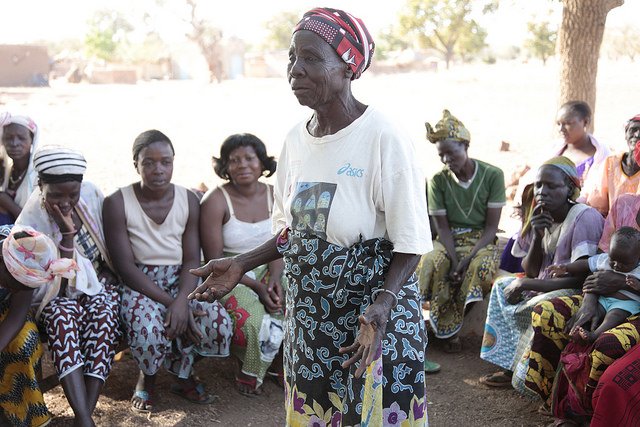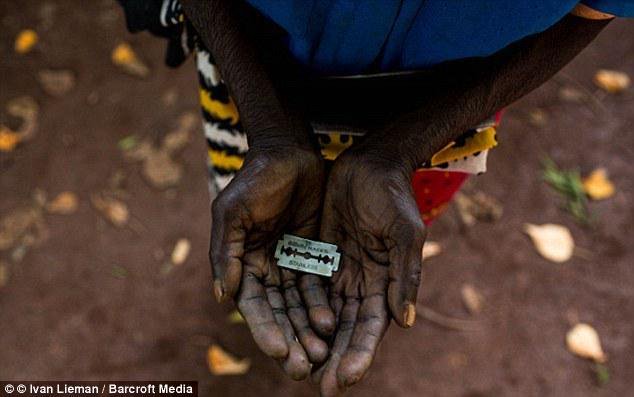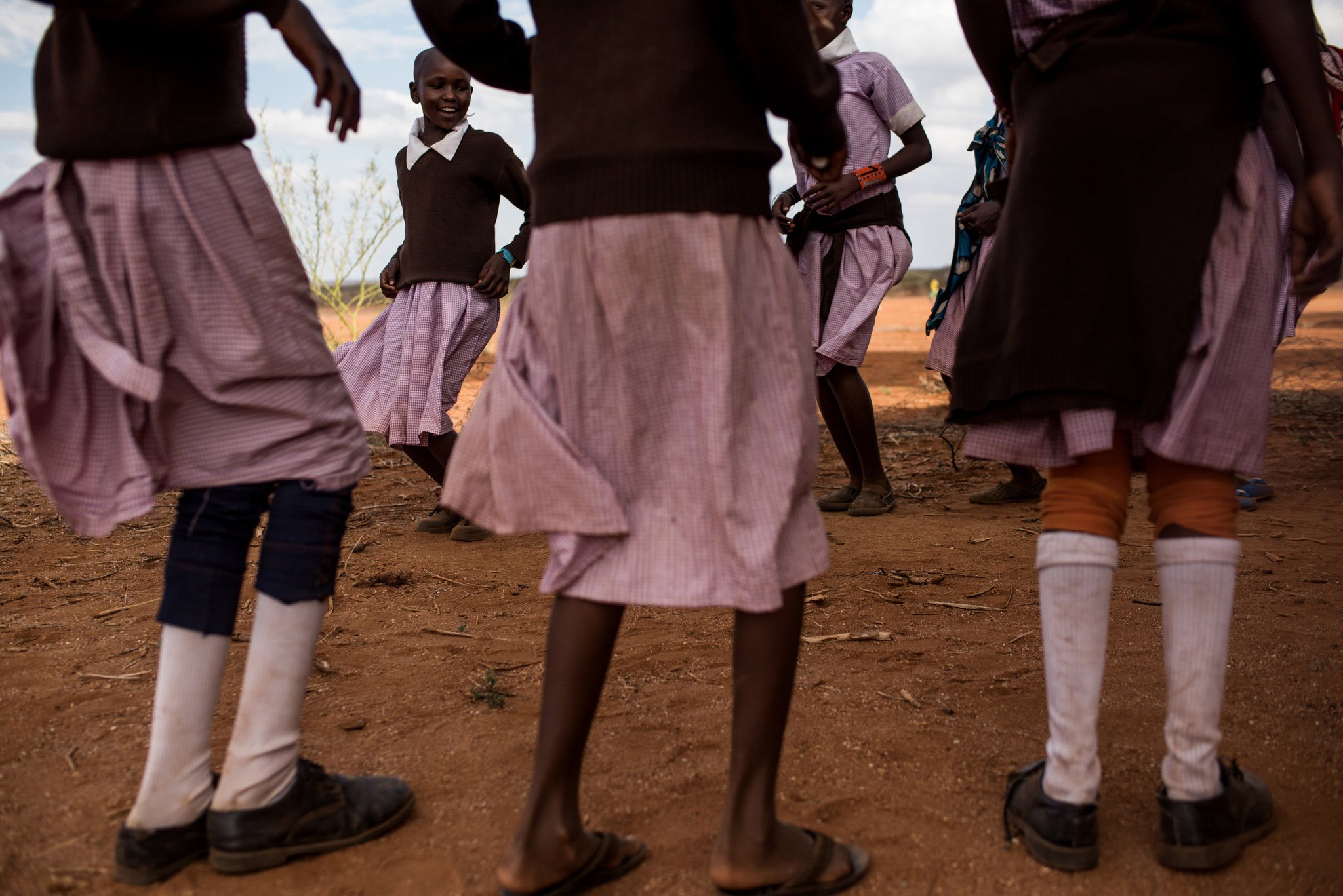The practice of female genital mutilation (FGM) is a form of violence against women and girls that has been around for more than a thousand years.
While its origins are unclear, eradicating the practice will bring the world one step closer to achieving gender equality — and ending FGM is a key part of the United Nations’ Global Goal 5, for achieving gender equality by 2030.
So what is FGM? It’s essentially the practice of partially cutting or entirely removing the external female genitalia, and also includes any other harm or injury caused to the female genital organs for non-medical reasons.
The practice of FGM only recently became an international human rights’ concern, with the largest global awareness campaign only becoming established in 2008, and in 2012 the United Nations General Assembly officially designated Feb. 6 to be the International Day of Zero Tolerance for Female Genital Mutilation.
The procedure was initially recognized as female circumcision. This term changed in order to encompass all forms of FGM and also to distinguish the vast differences between the term “female circumcision” and the practice of male circumcision. Just one of these differences being that health experts in southern and eastern Africa actually recommend male circumcision as a way to reduce HIV transmission, whereas FGM actually increases the risk of HIV transmission.
Today, FGM directly affects young girls more than older women, however 200 million women around the world have experienced and lived through the harmful practice, leaving many living with its long-term impacts.
What are 3 key facts people should know about it?
1. There are four different types of FGM identified by the World Health Organization.
Type 1 is the partial or total removal of the clitoris; Type 2 is the partial or total removal of the clitoris and the labia minora, and sometimes also the removal of the labia majora; Type 3 involves the narrowing or sewing up of the vaginal opening, including the removal of the labia minora and majora, and sometimes the clitoris. Type 4 includes all other harmful procedures, and can include pricking, piercing, and cauterization (burning).
2. There are no religions that promote FGM — it is a cultural practice that has become tradition over time.
3. It happens globally and has been banned in 44 countries — but even in countries where it’s been banned, enforcement is still a real problem.

How many people does it affect?
According to the World Health Organization, it is estimated that 200 million girls and women alive today have experienced FGM — and over 3 million girls are at risk of undergoing the practice every year. The rate of FGM is also increasing, in line with global population growth.
If the rate of FGM continues to increase, the UNFPA estimates that 68 million girls will undergo the procedure between 2015 and 2030 — with the number of girls every year projected to rise to 4.6 million in 2030.
Who is affected?
Young girls from just days after birth up until the age of 15 are most commonly cut, however the practice can also have long-term effects that impact women for the rest of their lives. It is also known to be practiced at different stages of a woman’s life, for example at the time of marriage or even after they give birth.
It is predominantly practiced in sub-Saharan Africa and the Arab States, however young girls in communities around the world are at risk of FGM.
The practice is still present, legally and illegally in some African, Asian, Middle-Eastern, Eastern European, and Southern American countries.
It is also present in western countries such as Australia, Canada, New Zealand, the US, the UK, and parts of Europe among immigrant or diaspora populations who’ve continued the tradition from different countries.
Although it has been banned in many countries, some communities avoid legal repercussions by participating in Cross-Border FGM. This is where girls living in a country where the tradition is banned, are taken across national borders to a country where it is not against the law to undergo FGM.
What impact does it have on people’s lives?
FGM has physical, psychological, and social impacts on people’s lives.
The direct physical impact it has is on the health and safety of the girls who experience FGM.
The health risks of the practice include bleeding, infection, higher risk of maternal and infant mortality, infertility, higher risk of contracting HIV, difficulty menstruating, painful urination, and urinary tract infections.
FGM can also cause short-term and long-term psychological trauma. In the short term it can trigger behavioral disturbances in children, which are closely linked to a loss of trust in their families or caregivers. In the longer term, women can experience anxiety and depression.
Finally, the tradition can have social impacts on individuals and families. In areas where it is deemed an essential rite of passage, not undergoing cutting can result in social exclusion of families and girls are often stigmatized and discriminated against. According to the UNFPA, some undergo FGM with the knowledge that it is harmful simply because the perceived social benefits of taking part in the tradition are considered to outweigh its disadvantages.

Why do people do FGM?
The reasons why it’s carried out differ from country to country. It is a practice that stems from serious gender inequality and, even today, is carried out without question in communities where it is common.
The UNFPA have divided the reasons for why it’s carried out into five different categories. These categories include:
- Psychosexual reasons — where it is performed to control a woman’s sexuality or to ensure virginity before marriage.
- Hygiene and aesthetics — in some communities the female external genitalia are considered ugly or dirty.
- Social and cultural factors — FGM is considered a rite of passage or initiation into womanhood in some communities.
- Religious reasons — although FGM is not endorsed or promoted by any religion, it is often connected to religion as a way to justify the practice.
- Socio-economic — in some communities where women are financially dependent on men, FGM is a prerequisite to marriage and is practiced to better the chances of inheritance and financial stability. It is also a major source of income for practitioners.
How does it impact on the mission to end extreme poverty and its systemic causes?
FGM doesn’t only impact the physical and mental health and well-being of women and girls, it can also impact their education (with Global Goal 4 calling for quality education), holding back broader societal progress towards achieving gender equality.
Undergoing FGM can disrupt a girl’s education — including being out of school for long periods of time to heal — or even cause them to drop out of school entirely, due to not being able to catch up, or due to the pain and trauma caused.
The practice is rooted in deep gender inequality, and so long as it exists, it will continue to be a significant hurdle in achieving gender equality globally.
 In the Maasai village of Lenkisem, girls between 9-16 participate in a two-day ceremony that brings girls from surrounding villages to one school. They bonded while being educated on their basic rights and why female genital mutilation (FGM) is unhealthy.
In the Maasai village of Lenkisem, girls between 9-16 participate in a two-day ceremony that brings girls from surrounding villages to one school. They bonded while being educated on their basic rights and why female genital mutilation (FGM) is unhealthy.
In the Maasai village of Lenkisem, girls between 9-16 participate in a two-day ceremony that brings girls from surrounding villages to one school. They bonded while being educated on their basic rights and why female genital mutilation (FGM) is unhealthy.
Who are the key players in tackling the issue?
Organizations such as the WHO, UNFPA, UNICEF, UN Women, World Bank, and more, are working actively to raise awareness of this human rights violation and to bring it to an end.
There are also many activists around the world on the same mission as these organizations, such as UN Women Goodwill Ambassador Jaha Mapenzi Dukureh, from the Gambia, who is persistently outspoken on the matter; and Somalia’s Ifrah Ahmed who launched a foundation in 2010 to fight the practice.
American actress Blake Lively has also actively spoken out against FGM on her platform, and even teamed up with L’Oreal Paris in 2015 to launch an initiative that brings attention to it.
What action can we all take against it?
This ongoing practice puts the health and well-being of girls and women at risk, and is a significant barrier to achieving gender equality. You can take action with us here to help make sure that we can end this form of violence and build a world where gender equality exists.
You can also take immediate action by educating yourself on the issue and following activists and influencers to gain more information on it. Get to know and understand the laws in your region surrounding the procedure in order to share the information with others.
Bringing awareness to FGM is one of the first steps that can be taken to eradicate it. Not just alerting people about the fact that the practice exists, but also highlighting that it is a practice that takes place internationally, in both high- and low-income countries.
It is also important to educate communities about the harmful effects and health risks caused by the procedure, as this can also help to reduce its continued practice.
On a governmental level, legal action and policy changes to end FGM must continue to be pursued globally in order to effectively eradicate it — and when it has been banned, these bans must be effectively enforced.